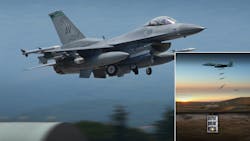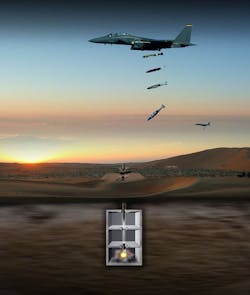Underground targets can be difficult to detect, let alone reach with weapons systems. For that reason, late last year the U.S. Air Force reached out to Northrop Grumman Corp. with a $110 million production order for the FMU-167/B system for reaching those underground targets. Also known as the Hard Target Void Sensing Fuze, the all-electronic, cockpit programmable, intelligent fuze is designed to destroy deeply buried targets. It can be set with multiple-delay arming and detonation times and it has a void sensing capability that makes it possible to activate the fuze at the precise location of the underground target.
“Northrop Grumman’s Hard Target Void Sensing Fuze takes the guesswork out of understanding the timing required to reach the target,” said Pat Nolan, vice president, missile products, Northrop Grumman. “We continue to make investments in sophisticated fuzes to help ensure U.S. warfighters and our allies are equipped with the best tools to complete their missions.”
The fuze is equipped with a sensor that can detect its height above a target for maximum weapons effectiveness upon detonation. One challenge in designing and developing such a system is its use in the extremely hostile operating conditions imposed by warfare environments, but the Hard Target Void Sensing Fuze has shown excellent survivability during the design and testing stages of the system development, with repeatable accuracy and reliability of detonation upon the intended target in each case.
About the Author
Jack Browne
Technical Contributor
Jack Browne, Technical Contributor, has worked in technical publishing for over 30 years. He managed the content and production of three technical journals while at the American Institute of Physics, including Medical Physics and the Journal of Vacuum Science & Technology. He has been a Publisher and Editor for Penton Media, started the firm’s Wireless Symposium & Exhibition trade show in 1993, and currently serves as Technical Contributor for that company's Microwaves & RF magazine. Browne, who holds a BS in Mathematics from City College of New York and BA degrees in English and Philosophy from Fordham University, is a member of the IEEE.

